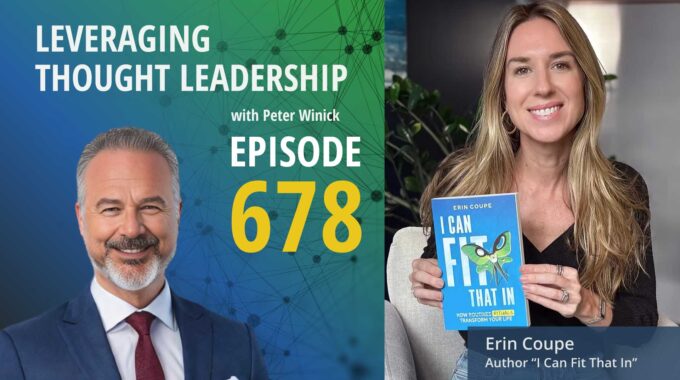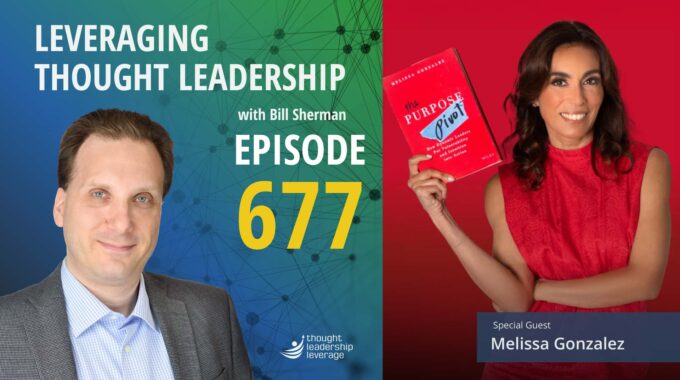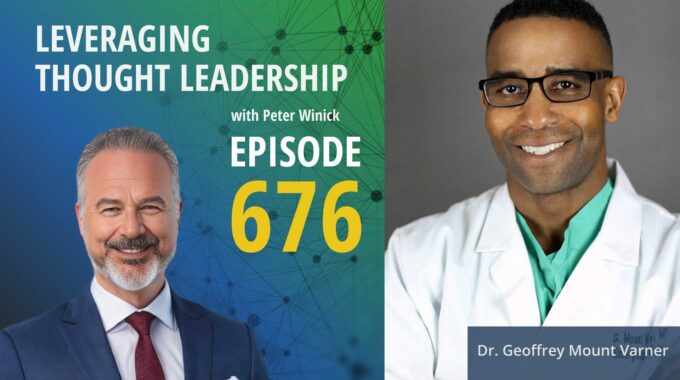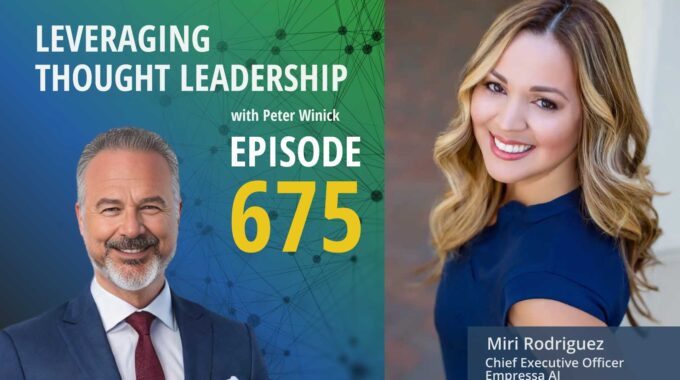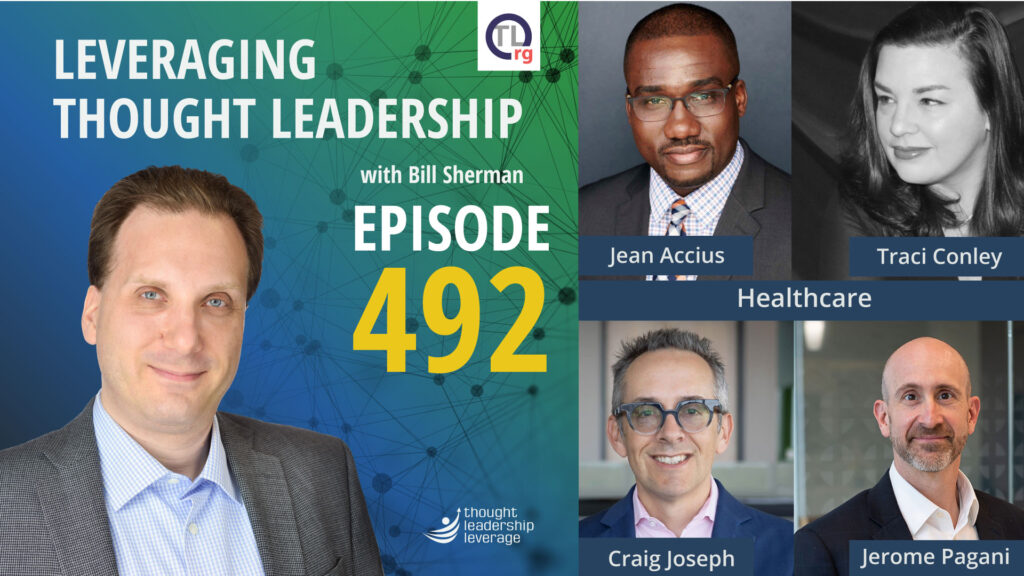



Influence, Communication, and Comedy for Healthcare Professionals.
A compilation of advice for thought leaders in the Healthcare industry.
Healthcare is a serious topic, and it needs great thought leadership to disseminate information swiftly and clearly to those that need it most.
In today’s episode, we revisit our conversations with three guests who focus on thought leadership for healthcare organizations.
Our first guest is Jean Accius, who at the time of airing was the Senior Vice-President, Global Thought Leadership and International Affairs for AARP. Jean helps us understand how thought leadership can position an organization at the forefront of the issues, challenge the status quo, and engage new audiences.
Next, we turn to conversation with Traci Conley, Thought Leadership Manager for Standard Imaging, Inc. Traci understands the importance of being able to get valuable information to healthcare professionals and patients. We discuss what you have to do when traditional mediums of communication breakdown, and how you can continue to provide high quality knowledge and care in the face of restrictions.
Finally, we catch up with Craig Joseph, the Chief Medical Officer at Nordic Consulting and Jerome Pagani, the Vice President, Head of Thought Leadership at Nordic Consulting. While healthcare is a serious topic, Craig and Jerome share how they inject a bit of humor into their message in a way that allows them to grab their audience’s attention and build trust.
Three Key Takeaways:
- Knowledge is the world’s most important currency.
- Carefully crafted humor can make serious topics more relatable and easier to discuss.
- Well-thought-out virtual experiences can deliver the same information and impact as an in-person event.
If you need a strategy to bring your thought leadership to market, Thought Leadership Leverage can assist you! Contact us for more information. In addition, we can help you implement marketing, research, and sales. Let us help you so you can devote yourself to what you do best.

Transcript
Bill Sherman Jean Accius, a nationally recognized thought leader on aging, longevity and long term health care policy. What is your role at AARP? Describe what thought leadership is within AARP. What are you doing?
Jean Accius Absolutely. Well, thought leadership works within AARP, really to position AARP as an organization that’s at the forefront of issues that shape the lives of people as they live in age. Our goal is to identify emerging topics, to challenge the status quo, and then to engage new audiences that can really become potential allies and partners in helping the world see aging in a totally different lens, in a very positive lens. To be exact.
Bill Sherman Now, who are your target audiences? Who are you trying to reach and what are you trying to achieve?
Jean Accius Absolutely. So we work across thinktanks, academia, government, industry and nonprofit organizations. Our audience is really influencers, thought leaders, major policymakers. And our goal is really to help advance emerging issues and to surface new solutions. We do this in three ways. One is that we believe that leadership is driven by this very strong belief that sharing knowledge is the world’s most important currency. So for us, it’s really about what are those thought provoking insights that’s backed by evidence that really provides a new angle on an issue that where AARP has something to say. We also focus on influence and conversations among leaders, both in thought and practice. As you kind of think about the global trends around longevity, in particular, we want to position AARP as that leading organization that fosters change, that creates pivot points and that inspires solutions. And then finally, it’s about impact. Right. So one is information is the world’s most important currency. Two, it’s really about influencing conversations and building new partnerships. Three, it’s really about impact. And then for us, we want to serve as a connector. We also want to spur change. Going back to what I said earlier, in terms of the fact that we want to help the world see aging in a totally different light, that there is value and experience and wisdom that comes with getting older and how can we create solutions that allow everyone to age as they would like?
Bill Sherman So you mentioned thought provoking questions, right? Are you coming with questions? Are you coming with sort of policy templates to people, some mix of the two? When you go to your audiences, what modalities are you using and how do you want them to respond?
Jean Accius Absolutely. So it’s a it’s a mixture of all of the above, both in terms of exactly are thought provoking questions that are unresolved. And I think a lot of the work around thought leadership is really to tackle some of these complex and difficult questions is really to kind of think big and to really think about what could the potential possibilities be. So for us, it’s really along those lines of really what are those big ideas, those big questions? And then we actually start by having a range of conversations with untraditional partners. So it’s not just the folks that know the work of AARP, but we also want to focus more specifically on those who do not. And then what are the opportunities to cross-pollinate and think about solutions to help address those questions. So in some cases, it might be policy, but in some cases it might be work that we’re doing with the private sector.
Bill Sherman So I want to dig a little bit deeper on that. You said untraditional partners. So give me a sense of who would be untraditional for you and why. Show me sort of the range of who you’re talking to and listening in to.
Jean Accius That’s a great question, though. Untraditional in the sense that we want to work with groups that have not traditionally work on aging issues or groups that have not thought about the growing trend, that people are aging and living longer and we want to be able to influence them to start to think about how do you actually put aging on the agenda for the work that they need to do?
Bill Sherman Can you give an example of that?
Jean Accius Absolutely. So we released a huge report called The Longevity Economy, and that report was able to quantify the economic contributions of people over the age of 50 in the United States. And the tune was around $8.3 trillion. Using that insight, we’ve been able to partner and show up at places as most recently as CES, which is the Consumer Electronics Show in Las.
Bill Sherman Vegas, here.
Jean Accius In Las Vegas, and say, well, why is AARP at CES? Well, we wanted to influence private industry and technology executives that this is a market that you need to be paying attention to, that this market in particular spends roughly about $140 billion in technology, and they’re looking for solutions to really help meet their needs. We wanted to counter this notion that older adults are fearful or scared or don’t know how to use technology. So we were one of six. So that’s just one of many examples in terms of exactly how can we as an organization partner with untraditional groups, people that typically don’t think about our issues in a very meaningful and strategic way?
Bill Sherman Traci Conley, the thought leadership manager with Standard Imaging. I want to start with a conversation that relates to audience in deep ways that you have to understand how you meet your audience and where. And I think you’ve got a great story based on standard imaging and the clients that you serve as to how events can change how you deliver thought leadership. You want to dive into that a little bit.
Traci Conley Absolutely. Especially given the past 18 months, the past two years, where the world as a as a unit has been so affected by the pandemic, every every ounce of what we do has been affected in some way that reaches into how you address an audience, how you approach people and how you pass information. So in the health care field, I am a radiation therapist by training, and now I work with standard imaging as the thought leadership manager. Part of my job is customer engagement and outreach and getting those messages out there. So given the changes that we’ve seen, our methodologies to getting this information to the people that need it the most has had to change significantly. So it’s really been magical to watch the health care field as a whole kind of grow and stretch and accommodate for these things. And education, you know, electronic education webinars and the podcast has have been instrumental in getting the message out there in times when we can’t be face to face.
Bill Sherman So let’s explore a little bit further, Right? My understanding and you’re working with cancer centers that are dealing with radiation therapy, right? In the old days, an education or an exchange of thought leadership might be an in-person event. Correct?
Traci Conley Absolutely.
Bill Sherman And so whether that’s getting together for a lunch or dinner or something like that, short presentation of here’s something to think about that was sort of ingrained into that culture for years, if not decades, Right?
Traci Conley Absolutely. That’s kind of the way we went about things very much. Congresses, conferences, chapter meetings, very much in-person exchange of information.
Bill Sherman And so because your target audience is working with a high risk population. Absolutely.
Traci Conley And we work with radiation therapists, radiation oncologist, doctors, cancer centers, medical physicists. These are our customers. These are, in many cases, our friends.
Bill Sherman Yes. So let’s talk about that process of adaptation and let’s dig into how were you making sure because there’s on the business side for standard imaging, there’s a need to make sure this information goes out as well as then there’s a patient need that this information gets heard. So when information channels get disrupted, how do you respond?
Traci Conley That’s a really good question and something that the entire industry has been fighting to answer, I think now for two years. You adjust and bend to what’s required to make sure that the folks get the information. The patients require high quality care. Those they’re caretakers, that the people that work in the hospitals require the information and the equipment to be able to offer that high quality care. And that’s where we come in. So we’re offering webinars and we’re offering virtual experiences for Congresses and things like that to still make sure the information gets disseminated so that the physicians and physicists who are and therapists and dosimeters all of who are performing these daily tasks and helping these already immune immunocompromised people receive the highest quality of care and they still get the information they need to be able to do that.
Bill Sherman Now, you talked a little bit about the virtual Congresses and conferences, right? And I think you’re doing some experimentation within how do you make people available for questions on a deeper way at the conference? And you we were talking earlier about doing video presence at that. You want to talk about how that evolved? Maybe because I think that’s a really cool sort of adaptation and we can dig into it.
Traci Conley Absolutely. And I it really came from a need to provide presence of multiple departments from within our organization. So we have the product management team, the marketing teams, the sales teams. All these teams are typically in-person at these Congresses and available to speak to the people within our field face to face, and help and help them gather the information they need. This year, we’re taking a different approach out of regard for safety of the people who then in turn, they leave us in a in a big, busy Congress hall exhibit hall, and then they go back and they’re treating patients who are immunocompromised and how they have to be careful with. So rather than put them at higher risk, we’ve decided to implement a virtual experience within our in-person experience. So our whole team will be available at these Congresses, but they’re going to be available via webcam. So kind of if you’re walking, if you can picture yourself walking through a booth, walk, walking through exhibit hall up to a booth, you can reach any member of our team simply by using the computer there at the station and having a chat with him via webcam.
Bill Sherman And I think there’s something that having that team on call rather than everybody standing in a booth together waiting for that one question that you know is coming sometime during the day, you lose a lot of time both from travel and then being at the booth. And so it’s not only to your point of safety, but it’s more efficient.
Bill Sherman If you’re enjoying this episode of leveraging thought leadership. Please make sure to subscribe. If you’d like to help spread the word about our podcast. Please leave a five-star review at ratethispodcast.com/LTL and share it with your friends. We’re available on Apple Podcasts and on all major listing apps as well as thought leadership leverage dot com forward slash podcasts.
Bill Sherman Craig Joseph is the Chief Medical Officer for Nordic Consulting and Jerome Pagani is the head of Thought Leadership there. So the two of you have used many different communication forms, short form video, conversations with each other, as well as incorporating humor into the pieces. And one of the things that I want to ask you about is where does humor fit in thought leadership and why do you use it?
Craig Joseph Well, humor is funny, though, You know.
Jerome Pagani Just – not in Craig’s hands.
Bill Sherman Jerome.
Jerome Pagani What I would say is that health care is a really serious business. Our clients are out there literally saving lives every day. And you’ve probably seen every article published out there about burnout and just how stressful it is and has been for the last two and a half years on top of how stressful it is just in the ordinary day to day. I think humor is a little bit of a bomb, so we don’t use it to make light of a topic or any sensitive content. We use it just as a as a little bit of add on there to try and give somebody information and then a little bit something extra that’s kind of feel good.
Bill Sherman So can you give me an example of where you’ve used humor in an unexpected way, contextual humor or situational humor? Craig, I know you’ve done some pieces that you’ve had fun with.
Craig Joseph Sure. You know, I think the way we use it most commonly right now is we have a little video series where Jerome and I talk about for about a minute and a half or so, 2 minutes a medical or a health care related issue. And it’s typically pretty serious. Some of it has been very serious, but we always end it with a little bit of a what we call shtick, a little a little skit near the end for a few a few seconds where we make fun of ourselves or we make fun of the situation. And I think that’s one of the keys, of course, is that we’re not making fun of anyone else. We’re making fun of ourselves. And so, you know, he’s got the Ph.D., I have the M.D. And in this particular series that we call Doc Talk, it always ends with one of us kind of acting a little silly and the other trying to correct them so that we make fun of the stereotypes of the Ph.D. as an academician who’s wearing a smoking jacket with elbow patches. And and I’m the I’m the clinician who’s busy asking lots of crazy questions to medical students and trainees. And so I think that no matter who you are, professionals are fine with poking fun at themselves, and especially when you’re calling out traits or characteristics that everyone knows are really there. But we don’t generally talk about through them, and I like to talk about those.
Jerome Pagani Yeah that that natural tension between. Or maybe it’s a good natured rivalry between MDs and PhDs these days has been sort of a rich field for us.
Bill Sherman Well. And to layer on to that, I think because you’re calling out not only yourself but part of the community that you were a part of and also speaking to, there is a sense of shared experience and humor where it is. And I’ve seen the examples of this more joyful and certainly not cruel in any way. Right.
Craig Joseph Yeah. And I think adding just a touch of humor adds some. It helps us to differentiate ourselves. And so just to give you another another example of a piece that we just did, I was interviewing a fellow physician here in Nordic. Well, he was barbecuing chicken in a in a professional kitchen in Kansas City. And so it’s kind of ridiculous. The background is just ridiculous. We’re both wearing suits and we have all the approach them, all that one would have when they’re working in a barbecue joint. Yet we’re talking about very serious topic and what we really are seeing in health care, trying to predict some of the things that are in the future. So if you just look at the words that we’re saying, it is completely straight forward, just like anyone else. But we have to add a little twist by making the surroundings a little silly and unbelievable.
Bill Sherman And I think one of the things that we have to do is recognize that even if we have great ideas for our audience, we’ve got to find a way to catch their attention. And a heavy white paper or a long form piece isn’t necessarily the way to do that. There’s very much a spoonful of sugar. Peace with humor and humor is subjective. But I remember a project that we did years ago where we were doing content creation specifically on a topic that was quite serious and stress and burnout. But before we went into studio to record, we actually had professional comedian and writers look over the script and go, Where can we add a little bit of levity into this? Because otherwise this is just going to be too dry. And so how do you bring back that entertainment rather than making it feel like an obligation?
Jerome Pagani Yeah, I totally agree with that. I think there’s a place for long form content for sure, but most of the things that most of the ideas that we want to get across are digestible enough that they can be done in sort of a short form format. And that little bit of humor adds the hook.
Craig Joseph That people know come to expect.
Craig Joseph Builds a little bit of trust that it’s not going to be big and heavy and plodding and sort of a commitment to come and engage with the content.
Bill Sherman If you’re interested in organizational thought leadership, then I invite you to subscribe to the OrgTL newsletter. Each month, we talk about the people who create, curate, and deploy thought leadership on behalf of their organizations. Go to the website, OrgTL.com, and choose “Join our newsletter.” I’ll leave a link to the website as well as my LinkedIn profile in the show notes. Thanks for listening, and I look forward to hearing what you thought of the show.




